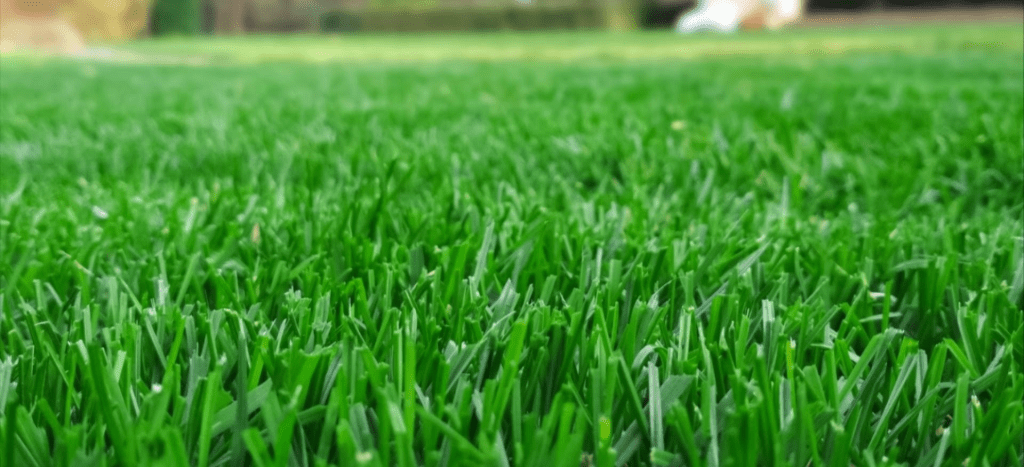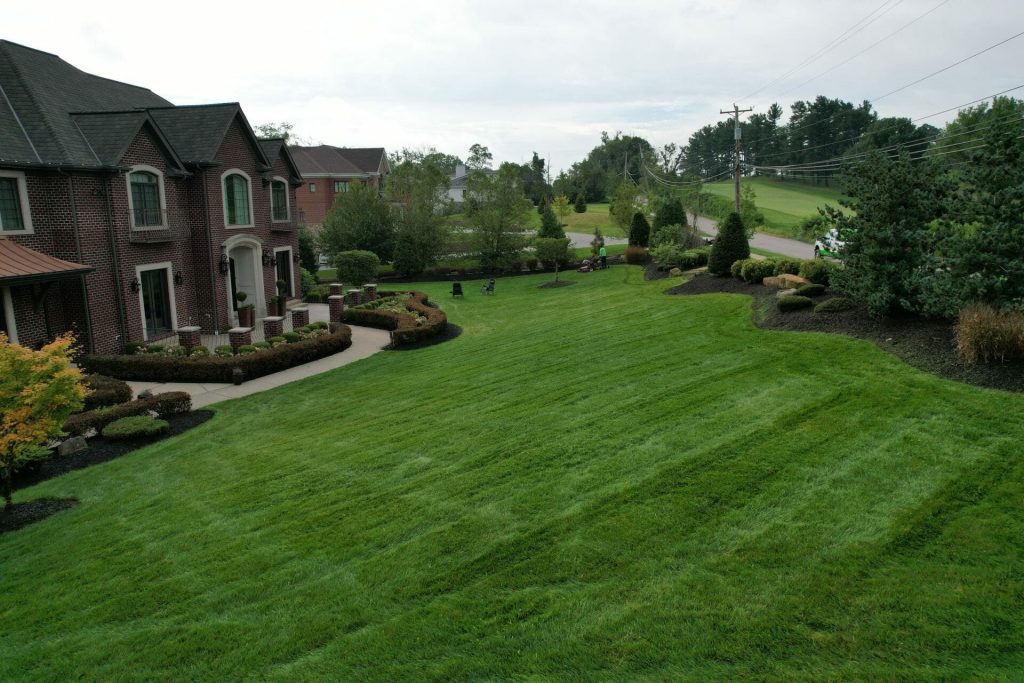You’ve already done the hard part by punching holes in the ground and scattering fresh seeds. Now, let’s focus on what to do next to give those seeds the best chance to grow strong. Here’s a simple guide on how to care for your lawn after aeration and overseeding, breaking it down step-by-step.

1. Water Regularly (But Not Too Much)
After aerating and overseeding, your lawn needs plenty of water. But here’s the key: keep it moist without overdoing it.
How to water:
- Water lightly but frequently. This means you should water your lawn 2 to 3 times a day, just enough to keep the topsoil moist. It’s better to give it a gentle spray rather than a long, deep soak.
- Aim for a light watering schedule for the first two weeks. You want the seeds to germinate, and over-watering can wash them away or drown them before they sprout.
Once the grass begins to grow, you can reduce the frequency of watering but start soaking deeper into the soil to encourage stronger root growth.
2. Mowing: When to Start Again
One of the most common questions is when to mow after aerating and overseeding. Cutting the grass too soon can harm those new, tender roots.
What to do:
- Wait until the new grass reaches at least 3 inches in height before mowing.
- Use the highest setting on your mower for the first few mows. You want to avoid scalping the new grass.
By giving the grass time to establish itself, you’re ensuring it grows healthy and strong.

3. Fertilizing Your Lawn
Fertilizing can give your lawn the extra boost it needs to thrive after aeration and overseeding. But timing is everything.
How to fertilize:
- If you didn’t add fertilizer during the overseeding process, wait at least 3 to 4 weeks before applying any. This ensures the grass has time to grow without overwhelming it with too many nutrients at once.
- Choose a starter fertilizer that’s designed for new lawns. This type of fertilizer has the right balance of nutrients to support root development.
Remember, less is more when it comes to fertilizing new grass. Over-fertilizing can actually harm the young blades, so follow the recommended application rates on the packaging.

4. Keep Off the Grass!
After overseeding, your lawn is in a delicate state. Walking or playing on it can compact the soil, damage the new grass, and slow down its growth.
What to do:
- Try to limit foot traffic for the first few weeks. This includes avoiding heavy machinery like lawnmowers or carts.
- If you need to walk on the lawn, consider placing boards or stepping stones down to distribute your weight more evenly.
The more you stay off the grass, the better it will be in the long run.
5. Control Weeds
Weeds love freshly aerated soil as much as your grass does, so keeping them under control is important. But be careful—some weed treatments can harm new grass.
What to do:
- Wait until the new grass is fully established before applying any weed control products. This can take anywhere from 6 to 8 weeks.
- If weeds are already popping up, try to pull them by hand or use a spot treatment designed for new lawns. Avoid applying broad-spectrum weed killers, as these can damage the fragile grass.
Patience is key here. Once the grass is strong enough, you can begin more aggressive weed control measures.

6. Oversee Progress and Adjust Watering
As your lawn starts to fill in, keep an eye on how it’s growing. Some areas may need a little extra help to thrive.
Check for:
- Bare patches: If any areas still look bare after a few weeks, you might need to reseed those spots.
- Water adjustment: Once the grass grows, gradually shift from light daily watering to deeper, less frequent watering. This helps the roots grow downwards, making the grass more resilient over time.
Pay attention to weather patterns. If you’re experiencing heavy rains, you can reduce watering to avoid waterlogging the soil.
7. Long-Term Lawn Care
Aeration and overseeding aren’t one-time fixes. To keep your lawn healthy, consider making these steps a regular part of your lawn care routine.
How often:
- Aerating once or twice a year can keep the soil from becoming too compacted. The best times for this are early spring and fall.
- You can also do overseeding yearly, particularly if your lawn is thinning or patchy. By adding new seeds regularly, you’re keeping the grass thick and lush.
Also, keep a regular mowing and watering schedule. The more consistent your care, the healthier your lawn will stay.
Conclusion
Knowing how to care for your lawn after aeration and overseeding can make all the difference in getting that lush, green yard you’re aiming for. Water regularly, delay mowing, limit foot traffic, and watch for weeds. Stay consistent with your lawn care to have a healthy lawn.
Ready to give your lawn a makeover? Get your FREE quote for fall aeration and overseeding for $50 OFF!


